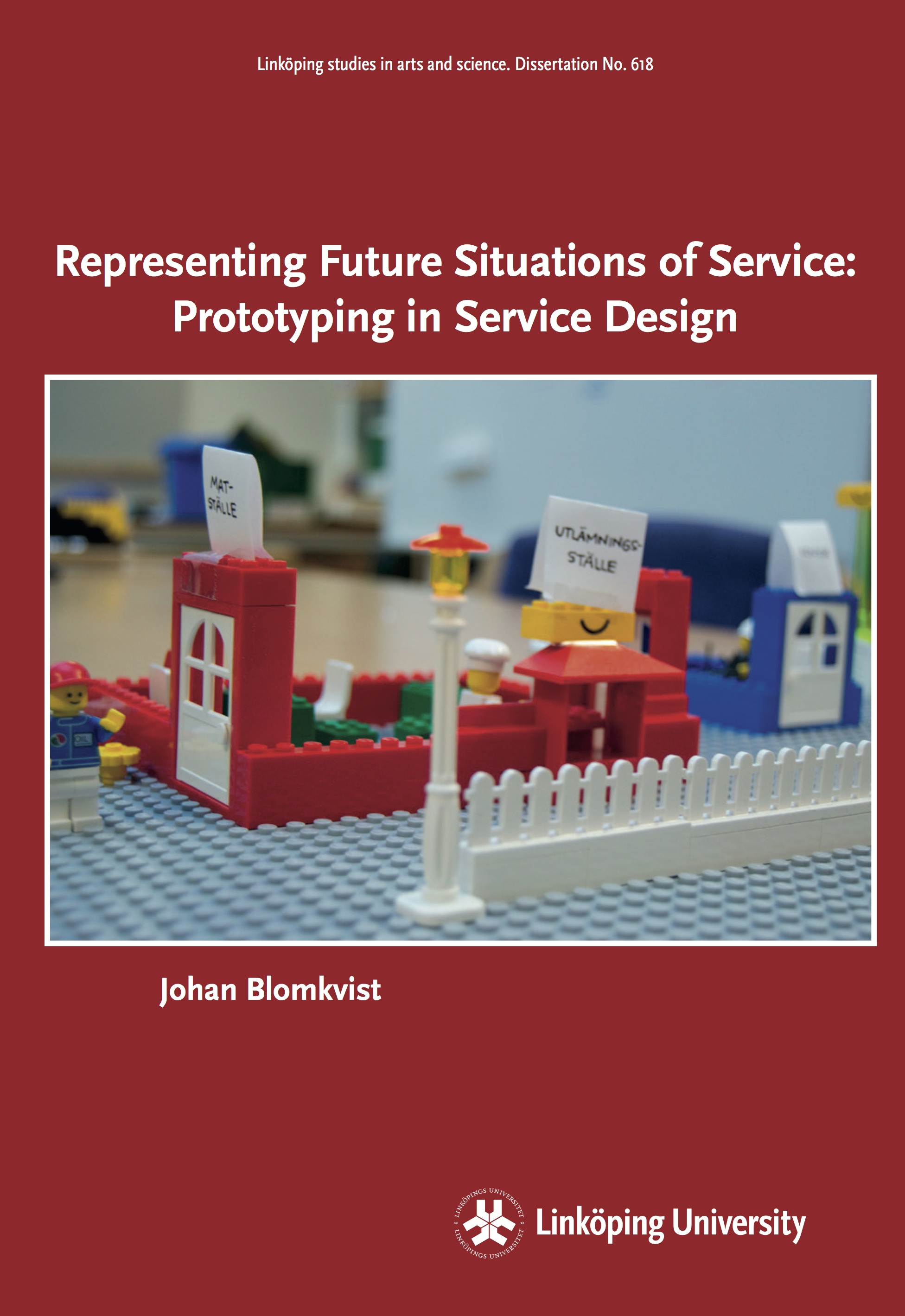Johan Blomkvist’s doctoral thesis on prototyping in service design

Representing Future Situations of Service
Prototyping in Service Design
by Johan Blomkvist
Linköping Studies in Arts and Science
Doctoral Dissertation
Human-Centred Systems Division
Department of Computer and Information Systems
Linköping University
This thesis describes prototyping in service design through the theoretical lens of situated cognition. The research questions are what a service prototype is, what the benefits of service prototyping are, and how prototypes aid in the process of designing services.
Four papers are included. Paper one suggests that service prototyping should be considered from the perspectives of purpose, fidelity, audience, position in the process, technique, representation, validity and author. The second paper compares research about how humans use external representations to think, with reasons for using prototypes in service design and service design techniques. The third paper compares two versions of a service prototyping technique called service walkthrough; showing that walkthroughs with pauses provided both more comments in total and more detailed feedback. The fourth paper also contributes to our understanding of how prototypes aid in designing services, by connecting the surrogate situation with the future situation of service. The paper shows how the formative service evaluation technique (F-SET) uses the theory of planned behaviour to add knowledge to service prototype evaluations about the intention to use a service in the future.
Taken together the research provides a deeper understanding of what prototypes are, and their roles in service prototyping.
This understanding is further deepened by a discussion about service as a design material, suggesting that from a design perspective, a service consists of service concept, process and system. The service prototype acts as a surrogate for the future situation of service. The thesis describes what the benefits of using surrogates are, and shows how prototypes enhance the ability to gain knowledge about future situations. This leads to an understanding of prototyping as a way of thinking in design.



